第69章 MONEY OR SIMPLE CIRCULATION(50)
It is a characteristic of nations with an "historical"development,in the sense given to this term by the Historical School of Law,that they always forget their own history.Thus although during this half century the issue of the relation between commodity-prices and the quantity of currency has agitated Parliament continuously and has caused thousands of pamphlets,large and small,to be published in England,Steuart remained even more of "a dead dog"than Spinoza appeared to be to Moses Mendelssohn in Lessing's time.Even the most recent historiographer of "currency",MacClaren,makes Adam Smith the inventor of Steuart's theory,and Ricardo the inventor of Hume's theory.[7]Whereas Ricardo improves upon Hume's theory,Adam Smith records the results of Steuart's research as dead facts.The Scottish proverb that if one has gained a little it is often easy to gain much,but the difficulty is to gain a little,has been applied by Adam Smith to intellectual wealth as well,and with meticulous care he accordingly keeps the sources secret to which he is indebted for the little,which he turns indeed into much.
More than once he prefers to take the sharp edge off a problem when the use of precise definitions might have forced him to settle accounts with his predecessors.This is,for instance,the case with the theory of money.
Adam Smith tacitly accepts Steuart's theory by relating that a part of gold and silver available in a country is used as coin,a part is accumulated as reserve funds for merchants in countries which have no banks and as bank reserves in countries with a credit system,a part serves as a stock for the adjustment of international payments,and a part is converted into luxury articles.He quietly eliminates the question about the amount of coin in circulation by quite improperly regarding money as a simple commodity.[8]This not entirely artless slip of Adam Smith was with much pomposity fashioned into a dogma [9]by his vulgariser,the insipid J.B.Say ,whom the French have designated prince de la science ,just as Johann Christoph Gottsched calls his Schonaich a Homer and Pietro Aretino calls himself terror principum and lux mundi .The tension caused by the struggle against the illusions of the Mercantile System prevented Adam Smith,moreover,from objectively considering the phenomena of metallic currency,whereas his views on paper money are original and profound.Just as the palaeontological theories of the eighteenth century inevitably contain an undercurrent which arises from a critical or an apologetic consideration of the biblical tradition of the Deluge,so behind the facade of all monetary theories of the eighteenth century a hidden struggle is waged against the Monetary System,the spectre which stood guard over the cradle of bourgeois economy and still cast its heavy shadow over legislation.
Investigations of monetary matters in the nineteenth century were stimulated directly by phenomena attending the circulation of bank-notes,rather than by those of metallic currency.The latter was merely referred to for the purpose of discovering the laws governing the circulation of bank-notes.